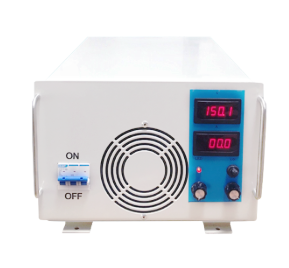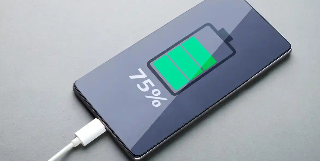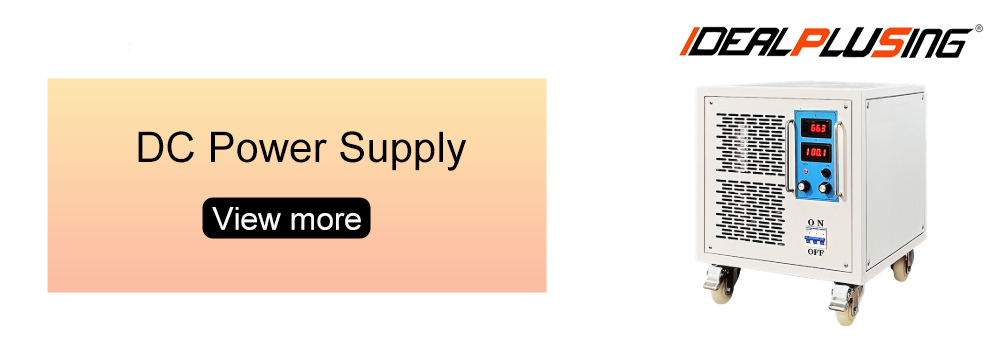A DC power supply What is DC power supply? I believe many people who are familiar with the electrical field are very familiar with it. It can convert alternating current, chemical energy, or other types of energy into direct current and adjust the output voltage and current as needed. This type of power supply is mainly used to provide stable and reliable electrical energy to loads that require DC power supply, such as electronic components, motors, medical equipment, etc. It's also got functions like ripple suppression and overload protection, which can meet the requirements of power accuracy and safety in different situations.

DC power plays a crucial role in modern electronic technology. So, in which fields and scenarios are they applied? The following will explain some application scenarios of DC power supply. This article covers the testing and maintenance of electrical appliances, electrolysis and electroplating, anodizing, sewage treatment, and some consumer electronics fields.
Performance verification and maintenance of electrical equipment
In the testing, and production stages of electronic components and equipment, DC power supplies serve as standard signal sources to simulate real-world operating environments and validate product performance. For instance, aging tests evaluate product reliability, identify potential defects, and estimate product lifespan by simulating various environmental conditions and operational states encountered during actual use within a short time. Before a product leaves the factory, manufacturers also use DC power supplies for testing. For instance, power banks will use DC power to simulate charging and discharging cycles prior to shipment to ensure compliance with expected standards.
Electrochemistry field
The essence of chemical reactions is the gain and loss of electrons, and direct current power can precisely control the flow of electrons, making it a key application in the field of electrochemistry. During the electroplating process, the metal to be treated (such as a watch case) needs to be immersed in a specific solution and connected to the negative electrode (cathode) of a DC power supply. After being energized, the metal ions in the solution will be converted into metal atoms under the action of electrons, evenly adhering to the metal surface, forming a bright and corrosion-resistant coating;
When it comes to anodising, you just attach the aluminium product to the positive electrode (anode) of a DC power supply. When you switch it on, a dense and hard aluminium oxide film is formed on the surface of the aluminium, which can also be dyed to make it look nice and resistant to wear and tear. With these two types of applications, it's really important that the DC power supply is accurate. You need stable current to make sure the coating or oxide film is the same everywhere. You can get the thickness of the film layer right by controlling the voltage properly. If the power output is unstable, it can easily lead to quality problems, like surface discolouration on the product.
In the field of sewage treatment, DC power is also really important. It's got a steady power supply, so it can do a bunch of different things to purify sewage. For one, it can break down and use strong current to destroy the structure of complex organic pollutant molecules in sewage, converting them into harmless small molecule substances. The second is the generation of oxidising substances. When you electrolysis water with an electric current, strong oxidising substances like hypochlorous acid are produced. These substances are great at breaking down pigments in wastewater, getting rid of bacteria, and reducing toxic compounds. The third method is adsorption precipitation. When you apply an electric current, heavy metal ions in sewage will move towards the electrode with the opposite polarity and then precipitate near the electrode, which achieves the separation and removal of the heavy metals. The DC power supply provides a steady and reliable energy source, which is essential for the efficient and smooth running of the whole sewage purification process.
Consumer Electronics
Lots of the consumer electronics we use in our day-to-day lives, like laptops, mobiles and white goods, need DC power to work and to be charged. Mobile phones and laptops have chargers that convert 220V AC power to low-voltage DC power, which matches the battery. So, mobile phones are 5V2A, and they use constant current voltage charging. They use fast constant current for early charging, and constant voltage for the rest of the charge, to avoid overcharging and protect the battery. When you're using it, a DC power supply can make sure everything's running smoothly and stop voltage fluctuations from causing breakdowns.

For LED lights, the built-in DC module converts AC power to low-voltage DC power (12V/24V) to drive the LED, avoiding flickering and improving energy efficiency. Small appliances such as electric toothbrushes use dedicated DC chargers to obtain accurate current and voltage, ensuring safe and efficient charging.
DC power supplies find applications across virtually every sector of modern society. This article won't cover them all, but interested readers can explore our company's past blog posts for more detailed insights into DC power supply applications. Customers seeking to purchase DC power supplies are welcome to contact us anytime—we'll respond as quickly as possible.








